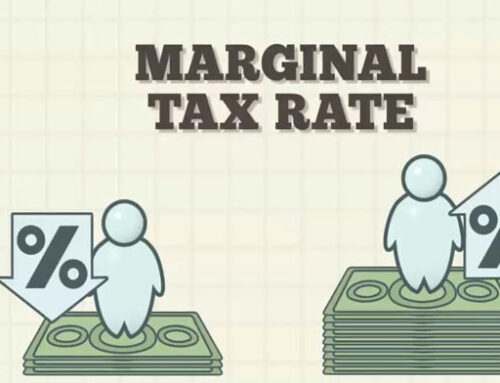Navigating Multiple Employers and Jobs: Balancing Employment in an Inflationary Economy
In today’s economy, many individuals find themselves juggling multiple employers and jobs to make ends meet, especially considering the recent surge in inflation. Whether it’s working for multiple employers simultaneously or transitioning between different jobs over the course of a year, managing multiple sources of income has become increasingly common.
Handling Multiple T4 Slips: Your Guide to Tax Season
By the end of February, employers are required to provide T4 slips to their employees, whether through in-person distribution, mail delivery, or secure human resources platforms. If you find yourself with multiple T4 slips to navigate this tax season, it’s important to understand the implications. To assist you further, multiple employers we have developed an interactive T4 slip guide, highlighting the significance of each line. Here’s what you need to know when managing multiple T4 slips during tax season.

Navigating Multiple Jobs: Tax Considerations and Form TD1
Managing multiple jobs can significantly impact your tax situation, potentially leading to a different tax bracket and a higher tax liability compared to previous years. Here’s what you need to know when juggling multiple employers jobs and how to avoid unexpected tax bills.
- Total Income Calculation: When you have more than one job, your total income includes earnings from all sources. It’s essential to add up your combined earnings to determine your overall income, as it may affect your tax bracket and the amount you owe in taxes.
- Basic Personal Amount: Each employer deducts tax from your pay based on a formula that includes the basic personal amount. This amount represents the minimum income threshold before individuals start paying income taxes, currently set at $15,000. However, if you have multiple employers, both will assume the basic personal amount is included in their calculations unless informed otherwise.
- Form TD1: When starting a new job, you are provided with a Form TD1 Personal Tax Credits Return (federal and provincial). On this form, it’s crucial to indicate to your second and subsequent employers that the basic personal amount has already been claimed. This ensures that the correct amount of income is taxed and helps prevent a tax shortfall.
- Multi-Provincial Work: If you work in more than one province, familiarize yourself with the tax credits and benefits you are entitled to in each province. When filling out your Form TD1, ensure you account for these credits accurately, avoiding any duplication of claims to prevent unexpected tax liabilities.
By understanding these considerations and properly completing your Form TD1 for each job, you can prevent potential tax surprises and ensure your tax obligations are appropriately accounted for when managing multiple employment sources.
Also read: Tax Impact of Ride and Accommodation Sharing
Managing Side Hustles and Self-Employment Income: Tax Considerations
If you have a combination of T4 income from employers and income from your own side hustle, it’s important to understand how to report and manage your earnings. Here are some key points to consider when handling side hustles and self-employment income for tax purposes.
- Reporting Side Hustle Income: Unlike traditional employment multiple employers where you receive a T4 slip, most side hustles categorize you as your own employer. Consequently, you won’t receive a T4 for side hustle income. However, if you work for companies like Uber or SkipTheDishes, they may provide an annual statement that can support your tax filing. Keep in mind that these statements are not automatically shared with the government.
- Business Expenses: Familiarize yourself with eligible business expenses that you can claim. For instance, if you drive for Uber, you may be able to deduct expenses such as gas used for driving purposes, multiple employers, car washes, and car maintenance (based on the proportion of kilometers driven for business versus personal use).
- Filing as Self-Employed: As a self-employed individual, you will need to complete the Statement of Business or Professional Activities, specifically forms T2125 and TP-80. Since there is no tax withheld from your self-employment earnings, it’s important to set aside a portion of your income throughout the year to cover multiple employers the taxes you’re likely to owe.
- Tax Instalments: If your tax owing at the end of the year exceeds $3,000, you will be required to make instalment payments towards the following year’s taxes. This ensures that you meet your tax obligations in a timely manner.
- Filing Deadlines and Payment Due Date: Self-employed individuals have until June 15 to file their taxes. However, if you owe taxes, the payment is due by May 1, 2023.
By understanding the reporting requirements, eligible deductions, and payment deadlines associated with self-employment income and side hustles, you can effectively manage your tax obligations and avoid any potential penalties.

Reporting Cash and Tip Income: Important Tax Considerations
If you’re working for cash or receiving tips without a T4 slip, it’s crucial to remember that you still need to report that income on your taxes. Here are some key points to keep in mind when it comes to reporting cash and tip earnings.
- Line 10400: “Employment income not reported on a T4 slip”: This is where you disclose to the government the amount you earned in cash or through non-reported payments. In Quebec, workers declare their tips at the end of each pay period by providing their employer with the TP-1019.4.V Register and Statement of Tips form. If you’re not in Quebec, it’s advisable to maintain a daily or biweekly tally, spreadsheet, or tracker of your tip earnings to multiple employers ensure the most accurate representation of your income.
- Accuracy Matters: While the government may not have a direct record of your cash tips (except in cases where employers add mandatory service charges to clients’ bills, which will appear on your T4 slip), they do have an idea of what you should earn based on factors such as hours worked, industry standards, and location. Therefore, it’s important to be as precise as possible when reporting your earnings. Keeping a comprehensive tracker of your tips is recommended, and be sure to retain this information for at least 6 years in case you receive a Notice of Assessment.
Also read: Are you at risk of being penalized with the Underused Housing Tax?
By diligently reporting your cash and tip income and maintaining accurate records, you ensure compliance with tax regulations and provide an accurate representation of your earnings. This not only helps you meet your tax obligations but also helps you avoid any potential issues that may arise during a review or assessment by tax authorities for multiple employers.
Recent Posts
FAQ
What forms do I need to complete if I am self-employed?
As a self-employed individual, you will need to complete the Statement of Business or Professional Activities, specifically forms T2125 and TP-80.
Is tax withheld from my self-employment earnings?
No, there is no tax withheld from your self-employment earnings.
How should I prepare for the taxes I owe as a self-employed person?
It's important to set aside a portion of your income throughout the year to cover the taxes you're likely to owe since there is no tax withheld from your self-employment earnings.



